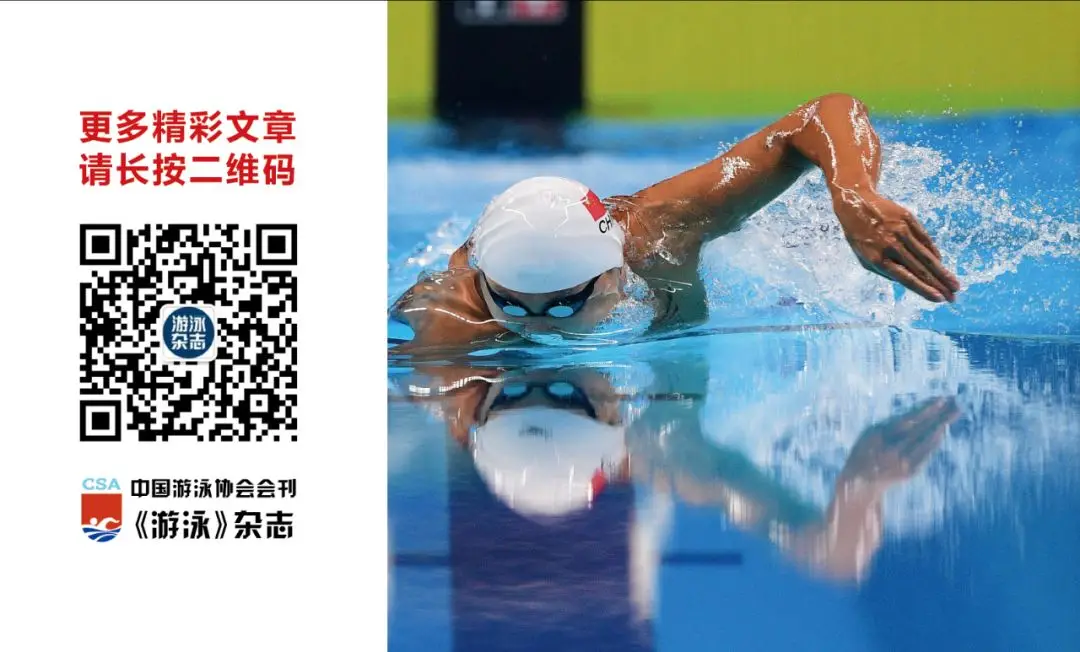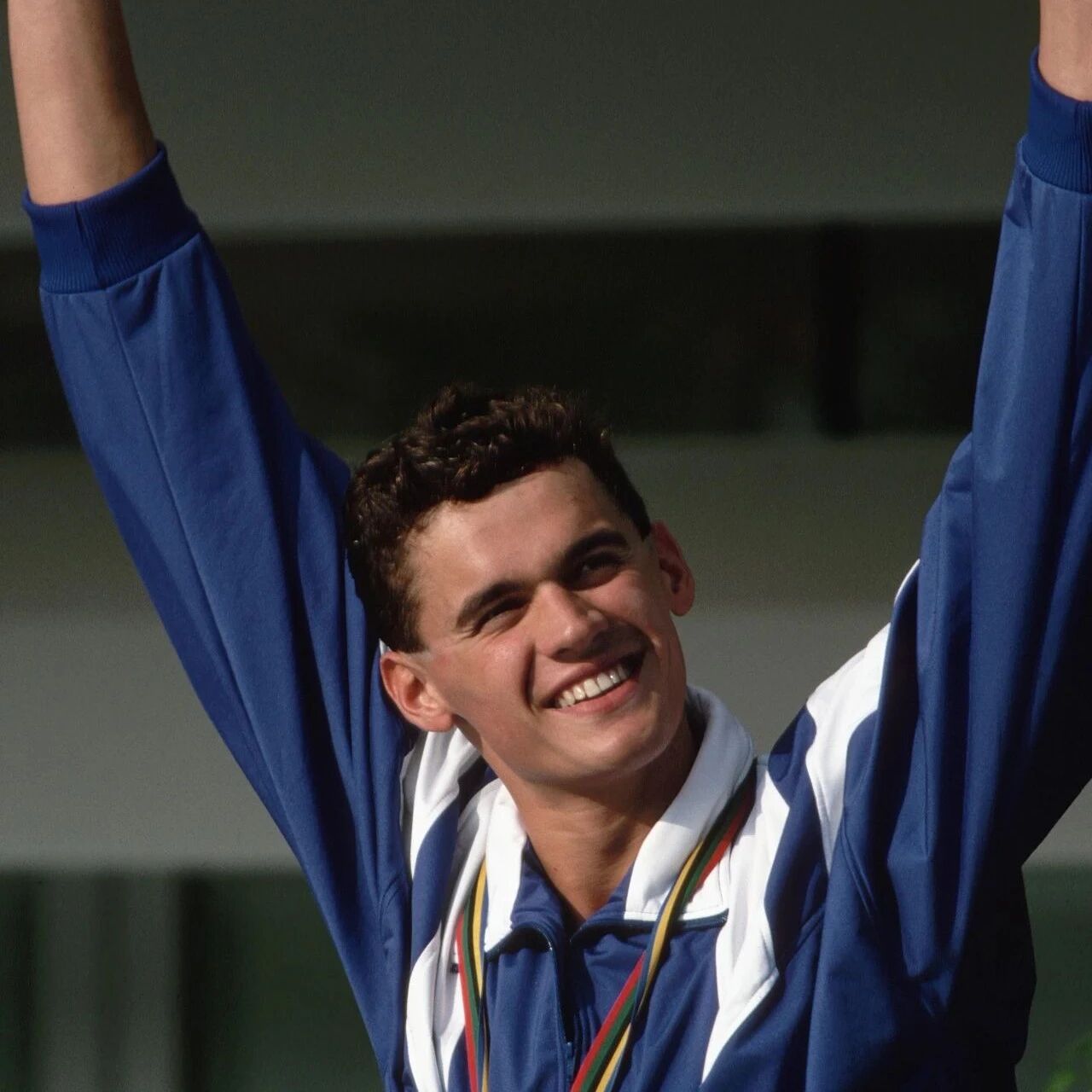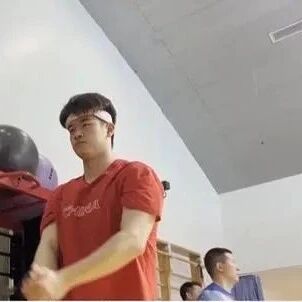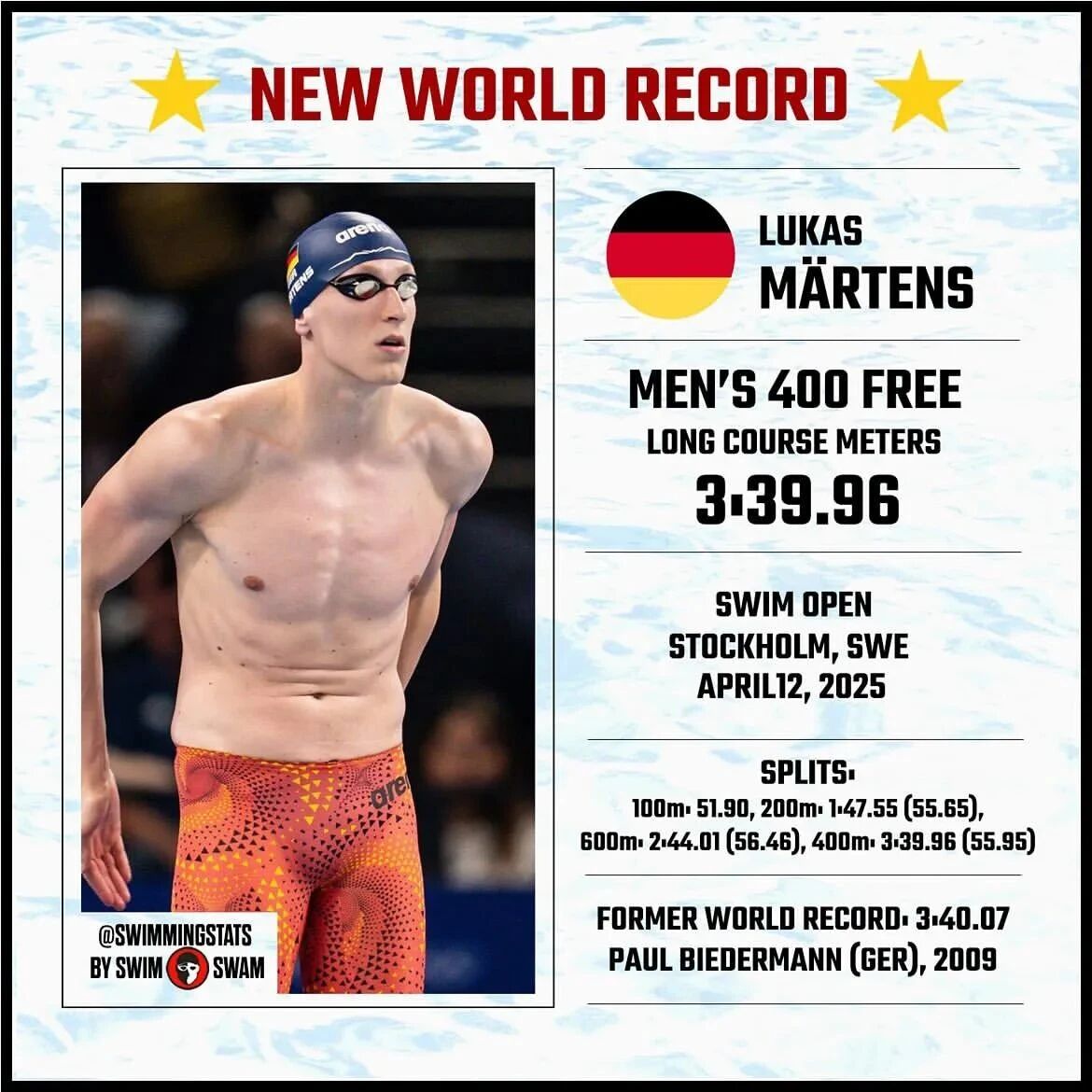The China State Council Information Office holds a series of thematic press conferences on "Promoting High-Quality Development" (State General Administration of Sport).
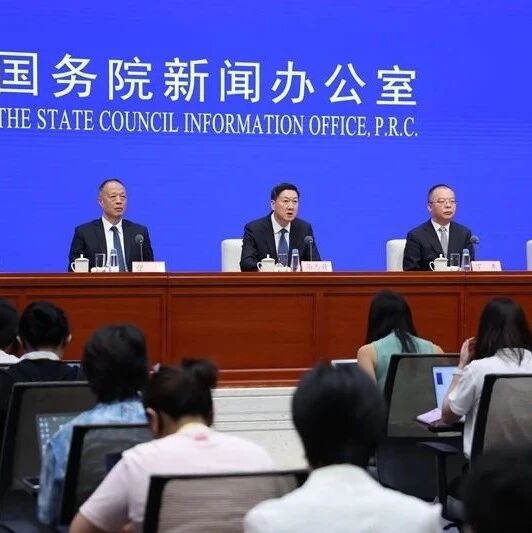


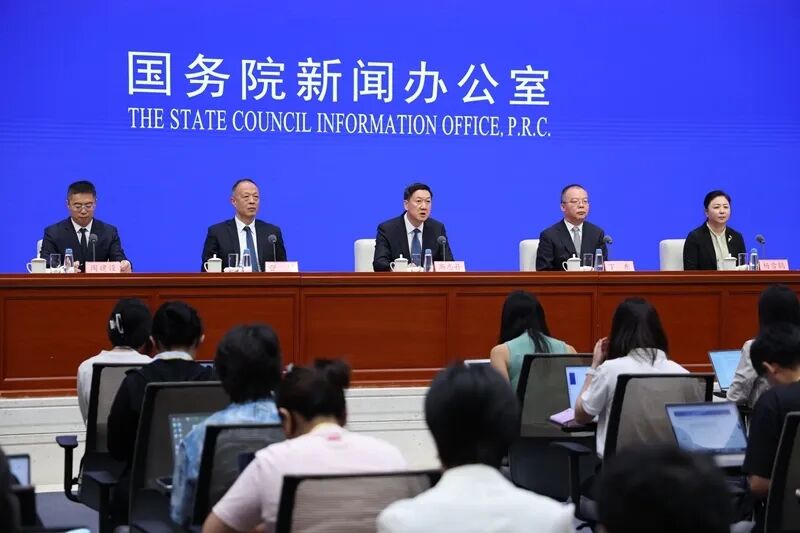
Shou Xiaoli, Director of the News Bureau and Spokesperson for the State Council Information Office:
Ladies and gentlemen, good morning! Welcome to the press conference held by the Information Office of the State Council. Today, we continue our series of thematic press conferences titled "Promoting High-Quality Development." It’s my pleasure to invite Mr. Zhou Jinqiang, Deputy Director-General of the General Administration of Sport of China, to provide an update and answer your questions. Also joining us today are: Mr. Ding Dong, Director-General of the Mass Sports Department; Mr. Zhang Xin, Director-General of the Competitive Sports Department; and Ms. Yang Xuedong, Director-General of the Sports Economy Department, all from the General Administration of Sport of China.
Now, please join us first as Mr. Zhou Jinqiang provides the introduction.
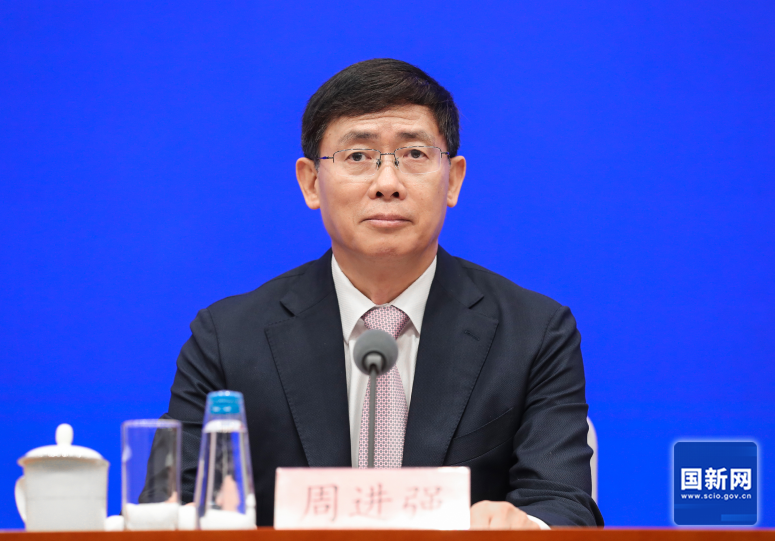
Zhou Jinqiang (photographed by Xu Xiang)
Zhou Jinqiang, Deputy Director of the General Administration of Sport of China:
Thank you, moderator. Good morning, journalists, ladies and gentlemen! It’s a pleasure to join my three colleagues today for this press conference. First of all, on behalf of the General Administration of Sport of China, I’d like to extend our heartfelt gratitude and sincere respect to all the journalists who have consistently supported the development of China’s sports sector over the years.
Since the 18th National Congress of the Communist Party of China, we have diligently studied Xi Jinping Thought on Socialism with Chinese Characteristics for a New Era, as well as General Secretary Xi Jinping’s important discourses and a series of key instructions and directives on sports work. We have firmly implemented the decisions and deployments of the CPC Central Committee and the State Council, actively embraced the new development philosophy, and steadily advanced the high-quality development of sports. As a result, mass fitness has gained widespread momentum, competitive sports have achieved remarkable success, youth sports are thriving, and the sports industry is experiencing rapid growth—paving the way for a new era in building China into a global sporting powerhouse.
First, nationwide fitness services are meeting the growing needs of the people. We remain committed to putting the people first, working tirelessly to tackle the challenges local residents face when it comes to staying active. As a result, China’s system and policy framework for (national fitness) have steadily improved, significantly easing the longstanding issue of "where can we go to exercise?" Meanwhile, fitness activities have expanded widely across the country, with an increasingly robust nationwide network supporting these initiatives. Moreover, the quality and availability of fitness facilities have surged, sparking wave after wave of enthusiasm for across the nation. Today, is playing a vital role in helping Chinese citizens enjoy a higher quality of life. Currently, 37.2% of China’s population regularly participates in sports and physical activities. By the end of 2023, the average per capita area of sports facilities in China reached 2.89 square meters—already surpassing the "14th Five-Year Plan" target of 2.6 square meters ahead of schedule.
Second, competitive sports achievements have showcased a new image of a rising global power. Aligning with the national goals for building a sporting powerhouse, we have consistently upheld and refined the nation-wide system for competitive sports, continuously enhancing our ability to win glory for the country. As a result, China’s overall strength in competitive sports—and its international influence—have steadily grown stronger. From 2012 to 2023, Chinese athletes clinched a total of 1,244 world championships and broke the world record an impressive 161 times. At the recently concluded Paris Olympics, our nation’s elite athletes delivered an outstanding performance, securing 40 gold medals, 27 silver medals, and 24 bronze medals—a remarkable achievement that marks China’s best-ever overseas Olympic showing since its debut at the Summer Games in 1984. This success firmly establishes China among the world’s leading sports powers and Olympic superpowers. On the global sports stage and on the world’s biggest arenas, our athletes have fearlessly scaled new heights, proudly representing their country and inspiring national pride. Through their extraordinary feats, they’ve not only demonstrated the transformative power of sports but also fostered deep patriotic sentiments and invigorated the nation’s spirit. In doing so, they’ve presented to the world a vibrant, modernized image of China—and highlighted the tremendous progress made in our nation’s socialist modernization drive.
Third, youth sports are injecting fresh energy and vitality into talent development. We fully leverage the critical role of sports in fostering well-rounded personal growth, actively deepening the integration of physical education and academic education. This approach aims to ignite momentum and enthusiasm for youth sports, while striving to enhance the overall health of young people. We’re promoting the integrated development of sports schools, regular schools, and youth clubs, leading to an increasingly diverse array of youth sports events. Meanwhile, both the youth competition system and the grassroots training framework continue to evolve, strengthening the foundation for nurturing future athletic talent. Through initiatives like the "Run, Youth!" Sunshine Sports Conference, we aim to inspire and lead by example, encouraging more children to get moving—running, jumping, and staying active. Additionally, we’re focusing on addressing common physical challenges among young people, such as childhood obesity ("little chubby kids"), vision problems ("little glasses wearers"), and spinal curvature issues, by widely promoting scientific fitness practices and implementing targeted health interventions tailored to their needs.
Fourth, the development of the sports industry is forging a new engine for market growth. We remain committed to boosting consumption and continuously driving the rapid expansion of the sports sector, unlocking sustained market potential and significantly enhancing its position and role within the national economy. Since the 18th National Congress of the Communist Party of China, China’s overall sports industry has experienced a remarkable surge in both scale and added value, with growth rates consistently outpacing the country’s GDP growth during the same period. As a result, the sports industry’s share of the nation’s GDP has steadily risen over the years. From 2012 to 2022, the annual average growth rate of the sports industry’s added value reached 15.4%, propelling its share of GDP from 0.60% to 1.08%. In 2023, China’s total trade volume in major sports services—including imports and exports—hit 52.89 billion yuan, representing a remarkable 178% increase compared to the previous year. Today, China has essentially established a comprehensive sports industry framework driven by competitive events and leisure fitness, while also fostering robust growth across complementary sectors such as sports venue services, sports training, sports manufacturing, and sports media.
Although China’s sports sector has made significant strides in recent years, it still stands at a critical juncture—transitioning from being large to becoming truly strong, while tackling tough challenges along the way. Key areas such as public services for nationwide fitness and the development of the "three major ball sports" continue to face notable shortcomings. The Third Plenary Session of the 20th Central Committee of the Communist Party of China has laid out clear guidelines for further comprehensively deepening sports reform, providing a clear direction and injecting powerful momentum into the national sports community as we accelerate efforts to build a sports powerhouse. Recently, General Secretary Xi Jinping, during his meeting with the Chinese delegation that returned from the 33rd Summer Olympics, highly praised the athletes’ outstanding competitive achievements and their inspiring spirit. At the same time, he urged them to "remain humble and vigilant, keep up the good work, and once again contribute new successes to the cause of building a sports power." Moving forward, we will steadfastly embrace innovation and reform as the driving force behind high-quality sports development. By actively embracing deeper reforms across the board, we will step up to new responsibilities and deliver fresh results, paving the way for a brighter future in our journey to build a world-class sports nation.
Let me introduce these first. Next, my colleagues and I are happy to answer any questions you may have.
Shou Xiaoli:
Now, please begin asking your questions.
Xinhua News Agency reporter:
The Chinese sports delegation achieved outstanding results at the Paris Olympics, inspiring and uplifting people across the nation. At the same time, there is great anticipation for the next steps in deepening reforms of competitive sports and enhancing our country's overall competitive strength. The Third Plenary Session of the 20th Central Committee of the Communist Party of China has made a strategic decision to "reform and improve the management system and operational mechanisms of competitive sports." Could you please outline the direction and objectives of these reforms, as well as the specific measures planned to ensure their effective implementation?
Zhou Jinqiang:
Thank you to this journalist friend for the question. The Chinese sports delegation achieved outstanding results and made breakthroughs across multiple fronts at the Paris Olympics, marking another solid step forward in our journey to build a world-class sporting nation. This success has boosted our confidence in accelerating the development of a robust sports powerhouse and reinforced our determination to deepen reforms in competitive sports.
The Third Plenary Session of the 20th Central Committee of the Communist Party of China put forward a clear directive to "reform and improve the management system and operational mechanisms of competitive sports," setting a clear direction for deepening reforms in this area. Our overarching reform approach is to uphold openness and inclusivity in running competitive sports, fostering a more robust integration of the national sports system with market-driven mechanisms. We will place greater emphasis on leveraging the power of market forces, accelerating the establishment of a competitive sports management framework and operational model that encourages participation from diverse stakeholders—including government, society, the market, and individuals—while promoting open collaboration, mutual benefits, and sustained vitality.
The specific tasks fall into three key areas: First, maintain a high-level strategic vision, placing greater emphasis on unlocking the comprehensive value and unique functions of competitive sports. By benchmarking against world-class sporting powers, we will not only consolidate our strengths in established disciplines but also prioritize enhancing performance in foundational sports and the "three major ball sports," driving rapid growth across mass sports, youth sports, and the sports industry through high-quality development and outstanding achievements in competitive athletics. Second, ensure strong leadership at the highest levels. We will develop and refine the Olympic Glory Plan for the new era, further improving the overarching strategic framework and establishing a more robust, systematic policy framework tailored to support the high-quality development of competitive sports, while simultaneously elevating governance capabilities and standards in this sector. Finally, adopt efficient and integrated management practices. This includes balancing summer and winter sports, prioritizing both leading and underperforming disciplines, and fostering equitable development between eastern and western regions. Additionally, we’ll implement tailored management approaches based on the unique characteristics of each sport—encouraging eligible sports to pursue professionalization, while actively engaging societal resources to nurture emerging sports. By optimizing resource allocation, refining sport-specific structures, and reshaping regional development patterns, we aim to promote balanced and coordinated progress across all areas of competitive sports. Thank you.
Southern Daily, Southern+ reporter:
Sports activities tied to popular events have drawn widespread attention, with sports venues across many regions fully booked—especially tennis courts, where spots are now in high demand. So, what measures will we implement in the future to meet the growing public appetite for sports and fitness? Thank you.
Zhou Jinqiang:
Thank you for your question—this one will be answered by Director Yang Xuedong from the Department of Sports Economics.

Yang Xuedong (photographed by Xu Xiang)
Yang Xuedong, Director of the Department of Sports Economics at the General Administration of Sport of China:
Thank you for the journalist's question. In recent years, with the development of our economy and society—especially since national fitness was elevated to a strategic priority—the public has shown ever-growing enthusiasm for participating in sports and engaging in sports-related consumption. At the same time, the loyalty of sports consumers continues to strengthen, as more and more athletic activities have become accessible to everyday people. In recent years, we’ve also made significant strides in helping meet the public’s aspirations for a better quality of life. As Deputy Director Zhou Jinqiang just highlighted, we’ve achieved impressive results in mass sports. However, challenges remain, particularly in terms of uneven and insufficient development. The issue of "difficulty finding a spot," as the journalist mentioned earlier, vividly illustrates the ongoing imbalance between supply and demand in this area. Looking ahead, our next key focus will be on significantly boosting supply across three critical areas to better align with consumer needs.
First, we will strengthen the supply of sports facilities. On one hand, we will fully leverage the guiding, leveraging, and effects of central budget investments, actively mobilizing social resources to significantly expand the construction of sports venues and facilities. We’ll also further promote free or low-cost access to public sports facilities, making it easier for people to participate in sports activities. On the other hand, we’ll encourage sports venues to undergo smart upgrades and renovations, while encouraging the public to engage in "off-peak" sports activities. By harnessing cutting-edge technologies, we aim to maximize the utilization rate of sports facilities.
Second, we will strengthen the supply of sports products. In manufacturing, we will accelerate the adoption of new technologies and materials in the sports equipment sector, driving the transformation and upgrading of the sports manufacturing industry. This will lead to the development of smart equipment and intelligent venues, enabling more widespread integration of cutting-edge technology into both products and consumer experiences. Meanwhile, in the service sector, we will expand the availability of sports events, offering multi-level, diverse, and personalized sports services that better meet the evolving needs of the public.
Finally, let’s strengthen the supply of policy measures. We will further enhance communication and coordination with the National Development and Reform Commission, the Ministry of Industry and Information Technology, the Ministry of Commerce, and the Ministry of Culture and Tourism, to develop and implement policy initiatives such as the transformation and upgrading of sports equipment, as well as strategies for high-quality outdoor tourism destinations. This will help continuously address bottlenecks and challenges in policy implementation, optimize the business environment, and unlock greater market vitality. Thank you, everyone.
Poster News Reporter:
In recent years, issues such as myopia, obesity, and poor posture among China's youth have drawn growing societal attention. How can we effectively leverage physical exercise to play a positive role in promoting the healthy development of adolescents? Thank you.
Zhou Jinqiang:
Please have Director Zhang Xin from the Department of Competitive Sports answer this question.
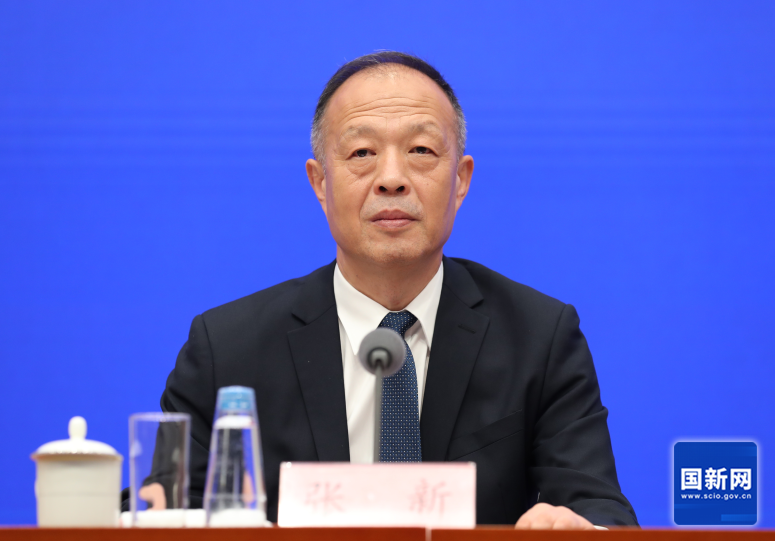
Zhang Xin (photographed by Xu Xiang)
Zhang Xin, Director of the Competitive Sports Department of the General Administration of Sport of China:
Thank you for your question. The healthy growth of adolescents is crucial to national development and the future of our nation. In recent years, the General Administration of Sport has diligently implemented the important instructions and directives of General Secretary Xi Jinping, consistently upholding the educational philosophy of "health first." We have continuously intensified our efforts and fully leveraged sport's unique role in fostering the holistic development and well-being of young people.
On one hand, we are leading the way in promoting and popularizing youth sports activities through themed demonstration events. Since 2021, the General Administration of Sport has collaborated with multiple departments to deeply implement the "Run, Youngsters!" fitness campaign, offering a wide range of initiatives for young people—including sports competitions, sports culture education, health assessments, and skill showcases. To date, over 120 million young participants have taken part, creating a significant impact across society. This past August, we hosted the National Youth Sunshine Sports Conference in Nanchang, Jiangxi Province, where more than 2,000 teenagers from across the country joined hands-on experiences in sports such as soccer, basketball, volleyball, martial arts, roller skating, jump rope, and rock climbing. Olympic champion Pan Zhanle and other elite athletes even encouraged young people to step into stadiums and embrace outdoor activities, emphasizing how sports can strengthen bodies, push personal limits, and inspire growth. Once again, this event has sparked a vibrant wave of enthusiasm among youth to get active and engage in physical exercise. In short, we’re making concerted efforts on multiple fronts to help young people not only understand sports but also learn to love and enjoy them—empowering them with the transformative power of sports to support their healthy development and bright futures.
On the other hand, guided by scientific fitness principles, we are intensifying efforts to strengthen interventions aimed at improving physical health. Focusing on issues such as myopia, obesity, scoliosis, and mental well-being among young people, we’ve organized experts to develop and collaborated with the public to gather innovative fitness guidelines and exercise-based intervention strategies. We’ve also created a series of engaging science books, designed specialized exercises like the "Myopia Prevention Exercises" and "Spinal Health Exercises," and developed sports-themed games along with comprehensive physical education and wellness programs—providing adolescents with tailored, science-backed fitness solutions continuously. Meanwhile, we’ve established the "Youth Health Promotion Cloud Science Platform," which regularly features animated video presentations and live-streamed activities led by expert educators. To date, this initiative has reached an impressive audience of over 345 million people.
That's all the information I have to share—thank you for your question.
China Daily reporter:
At the recently concluded Paris Olympics, our country's Olympic athletes truly shone on the global stage. In fact, many fitness enthusiasts across China are eagerly waiting for their own platform to showcase their talents. I’d like to ask the General Administration of Sport—what specific plans do you have to develop and promote more sports events that are accessible and engaging for people in their everyday lives? And how is this initiative progressing so far? Thank you.
Zhou Jinqiang:
Thank you, please have Director Ding Dong respond.
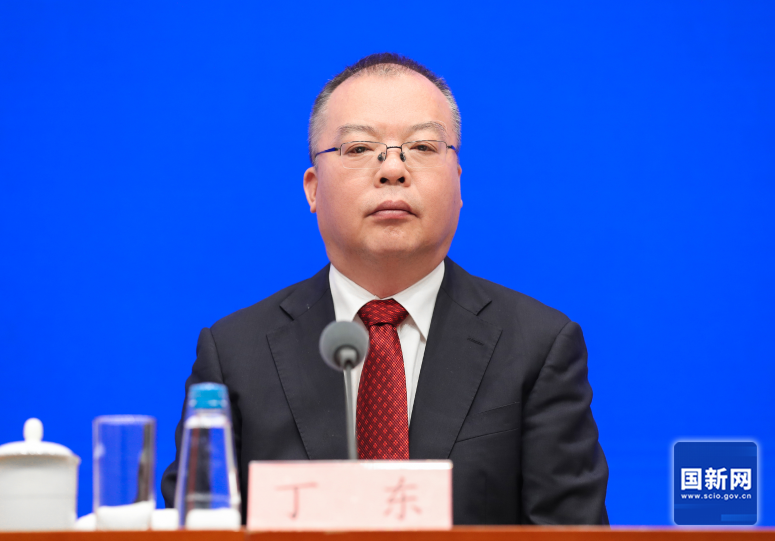
Ding Dong (photographed by Xu Xiang)
Ding Dong, Director of the Mass Sports Department at the General Administration of Sport of China:
Thank you to the journalist for the question. Sports events serve as a catalyst for advancing the development of nationwide fitness initiatives. In recent years, we’ve implemented a range of measures and adopted comprehensive strategies, focusing particularly on the following efforts:
First, we are leading the supply of nationwide fitness events and activities through mass sports competitions at the National Games, the National Fitness Championships, and community sports meets. Upholding the principles of "National Games for All" and "Sports Benefits the People," the 15th National Games, set to take place in 2025, will feature 23 major event categories and 166 sub-events open to the public. Currently, regions across the country are actively hosting "I Want to Compete in the National Games" selection events, giving fitness enthusiasts the chance to showcase their achievements on the grand stage of the National Games. This year, following the innovative approach of "providing a national platform for mass sports while bringing events right to people’s neighborhoods," we launched the inaugural National Fitness Championships, divided into seven regional divisions. Our goal is to create a nationwide fitness competition that is not only accessible and engaging for participants but also deeply rooted in local communities—empowering individuals to choose, participate, organize, and ultimately benefit from these vibrant, community-focused events. This initiative aims to enhance the sense of accomplishment and happiness among fitness enthusiasts, making sports participation more rewarding and enjoyable than ever before.
Next, throughout the year, we organized a series of time-themed (National Fitness) events, including the New Year Climbing for the Dawn, the Spring Festival Mass Fitness Celebration, the "Walk Along the Grand Canal" in May, the mass fitness activity commemorating Chairman Mao Zedong’s inscription—"Develop Sports and Strengthen the People's Physique"—in June, National Fitness Day in August, the Farmers' Harvest Festival in September, the "Double Ninth Festival" Senior Citizens’ Sports and Fitness Showcase in October, and the Public Ice and Snow Season in December. These initiatives have strengthened our brand-building efforts. Notably, in 2024, we launched the nationwide "Spring Festival Mass Fitness Celebration" for the first time, with many regions integrating these fitness activities into their overall festival planning. According to incomplete statistics, more than 7,200 mass sports events were held across the country during this year’s Spring Festival period, attracting over 10 million participants directly.
Additionally, we will intensify efforts to promote and popularize the "three major ball sports" as well as ice and snow activities. We’ll ramp up support, publicity, and development for grassroots events that have captured the public’s enthusiasm, such as "Village Super League," "Village Basketball Association," and "Village Volleyball Association." This will further solidify and expand the achievements of the initiative to engage 300 million people in winter sports. Guided by flagship events like the National Mass Ice and Snow Season, we aim to inspire more people to learn and improve their skills in ice and snow sports. Moreover, we’re strengthening the integration of online and offline initiatives. The National Fitness Online Games have already been successfully held twice, and this year marks the third edition. In 2023, the event attracted a record-breaking 22.6 million direct participants, with over 17 million participation certificates issued.
Next, we will continue to mobilize and inspire the enthusiasm of Party committees and governments at all levels, ensuring a richer variety of mass sports events, further strengthening the underlying system, organizing events in a safer and more standardized manner, and steadily boosting public participation.
That's all I'll answer—thanks.
Cover News Reporter:
In recent years, more and more people have been getting involved in fitness activities. I’d like to ask: What measures has the General Administration of Sport taken to meet the public’s growing demand for fitness? Thank you.
Zhou Jinqiang:
Please continue to invite Director Dingdong to answer this question.
Ding Dong:
Thank you to the journalist for your question. As you rightly pointed out, in recent years, people’s awareness of fitness has been steadily growing, and at the same time, they’re increasingly seeking higher-quality fitness experiences—such as convenient access to workout facilities, a more welcoming fitness environment, scientifically sound training methods, and clear, measurable results from their efforts. In essence, "being able to exercise, knowing how to exercise effectively, and achieving a healthy, fit lifestyle" have become the urgent needs of the general public today. To address these concerns, the General Administration of Sport is actively collaborating with governments at all levels and relevant departments, implementing a wide range of measures to meet the expectations of the masses.
First, we’ve made significant strides in building nationwide facilities and infrastructure for public fitness, ensuring that people "can easily stay active." To achieve this, we’ve introduced a comprehensive set of policies and standards aimed at advancing the development of sports parks, community fitness centers, jogging trails, public soccer fields, municipal ice rinks, and other socially accessible fitness amenities. During the 14th Five-Year Plan period, the General Administration of Sport, together with relevant departments, allocated 2.3 billion yuan to support local governments in establishing 17,000 fitness projects tailored to community needs. Additionally, we’ve continuously encouraged and facilitated the free or low-cost opening of public sports venues to the public. By the end of 2023, China’s per capita sports facility area had reached 2.89 square meters, while the total length of national fitness trails stood at 371,000 kilometers—making it easier than ever for people to engage in regular physical activity.
Second, we ensure that the public "knows how to exercise" by providing science-based fitness guidance. In recent years, we’ve rolled out a variety of science-driven fitness initiatives—such as grassroots-level fitness workshops, large-scale fitness seminars, and national physical fitness assessments—bringing expert advice directly to schools, rural areas, communities, and workplaces, making fitness knowledge easily accessible to everyone. We’ve also actively explored popular, science-backed workout methods, creating concise, easy-to-understand fitness videos and engaging fitness programs, while producing educational materials on sports safety for wider distribution. Additionally, we’ve sustained a three-year nationwide volunteer campaign focused on promoting physical fitness, alongside an initiative to gather outstanding examples of community engagement. As a result, 313 exemplary cases have been selected, inspiring and encouraging more volunteer organizations and individuals to join in efforts that support, ultimately elevating the quality and impact of these vital services.
Third, we are ensuring that the public can "get fit" by providing an even richer array of nationwide fitness events and activities. Currently, events like the National Games' mass participation competitions, the National Fitness Games, and community sports festivals have already become established brands. As I mentioned earlier, eight key national-level fitness-themed demonstration activities—such as the annual New Year Climbing event and National Fitness Day—are being carried out on schedule. Meanwhile, major efforts are underway to promote grassroots events centered around the "three ball sports," winter sports for the public, and various sports organizations across society, creating broader platforms for people to showcase their fitness achievements. Thank you.
Science and Technology Daily reporter:
At the recently concluded Paris Olympics, we saw plenty of cutting-edge Chinese sports equipment—could you briefly share some details about it? Thanks!
Zhou Jinqiang:
Thank you, please have Director Yang Xuedong respond.
Yang Xuedong:
Thank you to this journalist friend for the question. The sports goods industry is a vital component of the broader sports sector, accounting for what could be called "half of the pie." In recent years, we’ve actively promoted the transformation and upgrading of the sports goods industry, strengthening the innovation capabilities of sports equipment manufacturers. To date, we’ve announced two batches of nationally recognized specialized, niche, and innovative enterprises in the sports field, as well as manufacturing single-champion companies. As of now, these two categories include 80 and 15 companies, respectively, with sports products steadily improving in both quality and market influence.
At the recently concluded Paris Olympics, our nation’s Olympic athletes showcased their remarkable talent and prowess, achieving both outstanding athletic performances and a rich display of sportsmanship—fully meeting the goal of delivering an unforgettable Games. Meanwhile, innovative products from Chinese enterprises also stole the spotlight at the Paris Olympics. For instance, the vibrant-colored ping-pong tables on the table tennis courts and the domestically produced barbells used in weightlifting arenas captivated audiences worldwide, leaving a lasting impression. Specifically, in terms of cutting-edge technology, events like beach volleyball, tennis, and judo featured "bullet-time" technology for the first time in the Summer Olympics, allowing global viewers to witness athletes frozen in mesmerizing, sci-fi-like moments. As for advanced materials, China’s national cycling team proudly took to the track with bicycles crafted from T1100 carbon fiber—a material that weighs just 1,150 grams for the entire frame, making it the lightest among similar products globally. Moreover, in line with forward-thinking sustainability principles, the competition flooring used in events such as 3-on-3 basketball and table tennis incorporated recycled rubber materials, reflecting a commitment to green, low-carbon practices, circular economy initiatives, and environmental responsibility. In essence, these groundbreaking products not only elevated the global image of China’s sports industry but also underscored the nation’s unparalleled strength in technological innovation and manufacturing excellence. Above all, they vividly demonstrated China’s unwavering determination to drive its industrial chain toward higher-value, mid-to-high-end development.
Next, we will focus our efforts on both the government and market fronts. On the government side, we will continue refining policies—specifically, working closely with the Ministry of Industry and Information Technology to formulate and release policy documents that promote high-quality development in the sports goods manufacturing sector, further enhancing the business environment. Meanwhile, on the market front, we’ll keep nurturing brands by developing a group of cutting-edge "Made in China" premium brands in the sports industry, fostering more world-class sports enterprises, accelerating the industry’s transformation and upgrading, and ultimately boosting our international competitiveness.
That's all I wanted to share with everyone—thank you.
CCTV reporter from China Media Group:
I’d like to ask—have the Paris Olympics actually sparked a nationwide fitness boom, boosting sports-related consumer spending? And in conjunction with the continuous rollout of initiatives aimed at leveraging the "event economy," could you share some updates and specific details on these developments? Thank you.
Zhou Jinqiang:
Let me answer this journalist’s question. Sports events have a tremendously significant impact on driving the sports economy. In line with the unified deployment of the Party Central Committee and the State Council, we’ve collaborated with the Ministry of Commerce and the Ministry of Culture and Tourism to launch initiatives like "Bringing Sports Events to Scenic Spots, Neighborhoods, and Commercial Districts," as well as the "Traveling with Sports Events" campaign. These two programs have sparked widespread enthusiasm across society—and especially within the tourism market—yielding remarkable social outcomes. While we’re still in mid-year and haven’t yet tallied the overall figures, let me share two notable examples. First, Shanghai hosted the "Olympic Qualification Series" this past May, attracting 45,000 domestic and international spectators and generating direct economic benefits of 643 million yuan, along with an additional 1.402 billion yuan in indirect economic gains. Second, from January to August, Fujian Province organized 542 similar events, drawing 2.48 million participants and boosting various forms of consumption by 3.685 billion yuan—representing a robust 21% year-on-year growth. To further enhance these initiatives, in July we joined forces with the Ministry of Culture and Tourism to release the "2024 National Summer Outdoor Sports Event Catalog," designed to encourage travel centered around sports events. By aligning this initiative with the peak summer leisure season and capitalizing on the global buzz surrounding the Paris Olympics, we’re continuously unlocking new consumer potential.
The Paris Olympics have also had a remarkably significant impact on the sports industry, which can be succinctly summarized with three "more" concepts. First, niche sports are gaining unprecedented popularity—events like BMX, street dance, rock climbing, breaking, and tennis are now drawing massive attention. In fact, according to statistics, group-buying volume for tennis-related products on Meituan surged by 172% in July alone. Second, the way people watch sports is becoming more innovative. Beyond traditional TV broadcasts and digital platforms, fans are now flocking to cinemas to enjoy live event coverage—creating an immersive, high-energy atmosphere that amplifies engagement even further. We’ve already seen plenty of feedback echoing this trend during the Paris Olympics, with many viewers expressing how much they enjoyed watching sports live in the cinema. Looking ahead, this could very well become a major growth trajectory for the industry. Finally, the economic ripple effect of the Olympics is proving to be even more pronounced. Data from platforms like Douyin and Kuaishou reveal that sales of spectator-related products—such as beverages, food items, and consumer electronics—soared by nearly 200% year-on-year during the Games. This highlights not only the immediate boost to related industries but also underscores the enduring appeal of sports consumption in today’s market.
Next, we will focus on three key areas of work: First, we’ll play the policy card effectively. We’ll introduce more targeted policies and measures to unlock policy benefits, carefully study and formulate event-specific guidelines, address existing bottlenecks, and further expand opportunities for sports-related consumption experiences. Second, we’ll strengthen our event initiatives. Together with relevant departments, we’ll continue promoting activities like “Traveling with Events” and initiatives such as bringing sports events into scenic areas, neighborhoods, and commercial districts—ensuring these efforts yield even greater impact. Finally, we’ll boost our promotional efforts. We’ll highlight and share best practices and successful strategies from various regions in leveraging event-based economies and driving sports consumption. To this end, we’ve already distributed the first batch of practical case studies on event-driven economies, and we’ll soon release a second set, helping to foster and guide the sustainable growth of the event economy. Thank you.
Daily Economic News reporter:
We’ve noticed that the demand for youth sports training is currently growing rapidly. Could you please share your thoughts on how we can further guide and standardize services in the youth sports training industry? Thank you.
Zhou Jinqiang:
Thank you, please have Director Zhang Xin answer.
Zhang Xin:
Thank you for your question. Youth sports training institutions serve as a vital hub where young people can engage in physical activity, learn sports skills, and enhance their competitive abilities. In recent years, these institutions have experienced rapid growth, with a swift increase in the number of providers offering diverse and innovative training programs—effectively meeting the ever-growing demand for sports education among youth. According to statistics, there are now more than 30,000 youth sports training organizations across the country. As such, ensuring the effective management and utilization of these institutions has become a critical challenge for our regulatory authorities.
To ensure this effort is effectively carried out, the General Administration of Sport has successively issued documents such as the "Code of Conduct for After-School Sports Training" and the "Opinions on Further Standardizing and Developing Sports Training," laying the groundwork for an initial regulatory policy framework. Local sports administrative departments have been guided to develop and implement standardized guidelines for establishing sports training institutions, while also reinforcing accountability at each level and establishing robust operational mechanisms. Currently, several regions have already accumulated practical and effective approaches in areas like providing guidance services, ensuring proper staff qualifications, and refining regulatory systems. For instance, some localities have created databases of training institutions and "whitelist" lists for qualified professionals, introduced credit-based evaluation systems for training programs, conducted unified staff training initiatives, and established centralized regulatory information platforms coupled with dynamic management of institutional records. By continuously improving standards in the youth sports training sector, we aim to foster healthy and orderly industry growth—giving parents peace of mind when making purchases and allowing children to learn with joy. Thank you all!
Reporter from the Xin Huanghe Client:
How to make it easier for people to participate in sports activities is a matter of great concern for the general public. Currently, many regions boast well-equipped sports facilities. Could you please explain how the General Administration of Sport is promoting the opening of public sports venues to the public? Thank you.
Zhou Jinqiang:
Please have Director Ding Dong respond.
Ding Dong:
Thank you to the journalist for the question. Public sports venues, as crucial spaces for promoting nationwide fitness activities, play a vital role in ensuring convenient access for the general public to engage in physical exercise. The General Administration of Sport places great emphasis on opening up sports facilities to the public and is actively collaborating with relevant departments to enhance both the utilization rate and service quality of these venues.
Specifically, regarding the use of funds, we have refined the allocation guidelines for central government subsidies, expanding the scope of support to include public sports venues. The subsidy criteria have been adjusted from the original focus on seating capacity to a more comprehensive approach that considers factors such as the number of eligible venues in each region, the area of open fitness facilities, and the annual number of visitors to these facilities. As a result, subsidies are no longer limited to large-scale venues—instead, smaller and medium-sized facilities, as well as community-based fitness centers that meet eligibility requirements and are widely popular among the public, are now also included in the program. These funds can be used to support the organization of public-benefit sports events, provide affordable sports training, ensure routine venue maintenance, upgrade equipment and facilities, and enhance the overall operational environment through initiatives like improving venue digital services.
In terms of venue services, we have developed supporting policy documents such as the Basic Public Service Standards for Public Sports Venues and the Evaluation Guidelines for Free or Low-Cost Open Services. These documents outline a series of detailed, quantifiable requirements regarding venue accessibility and service offerings. Specifically, venues are expected to set low-cost fees no higher than 70% of local market prices. Additionally, more favorable services will be provided to seniors, people with disabilities, students, military personnel, firefighters, rescue workers, and public-interest-based mass sports events, with fee standards generally capped at no more than 50% of market prices.
In terms of supervision and evaluation, local authorities are instructed to strengthen monitoring and assessment based on aspects such as the venues' capacity to host sports events and activities, their involvement in sports training programs, support for schools in promoting physical education, and provision of facilities for public-benefit sports organizations. Localities are required to publicly disclose their annual open-service performance on the National Fitness Information Service Platform, thereby inviting public scrutiny. Additionally, each year, third-party organizations will be commissioned to conduct more rigorous inspections and evaluations of venue operations across different regions.
Since the start of the 14th Five-Year Plan, we have allocated approximately 1 billion yuan annually to support the free or low-cost opening of public sports venues to the public. The number of venues receiving this subsidy has grown significantly—from over 1,000 per year initially to more than 3,000 today. According to statistics, in 2024, a total of 3,050 eligible public sports venues were opened to the public free of charge or at reduced fees. These venues now span nearly 1,600 county-level administrative regions across the country, with the area of venues offering free or low-cost access exceeding 25 million square meters. We expect that over 500 million people will benefit from these initiatives.
That's all I'll answer—thanks.
Beijing News reporter:
With the Paris Olympics now over, a new Olympic cycle has already begun. Looking ahead, how do you see the competitive landscape shaping up for the upcoming Los Angeles Games, and what are your expectations for performance? Thank you.
Zhou Jinqiang:
Please have Director Zhang Xin answer.
Zhang Xin:
Thank you for your question. The 34th Summer Olympics will be held in Los Angeles, USA, in 2028. Following the Paris Games, we are facing a series of new challenges—driven by an analysis of the evolving global competitive landscape in sports for the upcoming cycle, as well as the changes in event configurations for the Los Angeles Olympics.
Competitive sports always face challenges, but China’s competitive sports community bravely rises to meet them head-on. We will deeply study and implement the important speech delivered by General Secretary Xi Jinping during his meeting with the Chinese Olympic delegation in Paris, striving to enhance our scientific training methods, leverage our strengths while addressing weaknesses, accelerate talent development, and ensure high-quality preparation for the upcoming Los Angeles Olympics. On one hand, we will firmly consolidate our strongholds in core events where China traditionally excels, ensuring continued success in vying for gold medals and top honors. On the other hand, we’ll channel significant efforts into unlocking the full potential of foundational sports like track and field and swimming—areas critical to Olympic success—as well as emerging and competitive combat sports. At the same time, we’ll expedite initiatives aimed at revitalizing the “three major ball sports,” continuously boosting China’s competitiveness and global influence on the international sports stage.
We firmly believe that with the care and attention from the Party Central Committee and the State Council, as well as the strong support of people across the country, as long as we strive relentlessly, vigorously promote the Chinese sports spirit, unite in determination, fight bravely, dare to excel, and constantly push ourselves toward greater heights, we will surely continue to showcase the remarkable prowess of China’s athletes at the Los Angeles Olympics. Thank you.
Shou Xiaoli:
The final question.
China Business News reporter:
In recent years, the outdoor sports industry has garnered significant attention. Could you please share what the next steps will be in advancing this industry? Thank you.
Zhou Jinqiang:
Thank you for your question; please let Director Yang Xuedong respond.
Yang Xuedong:
Thank you to our journalist friend for the question. The outdoor sports industry is a green sector and also an effective way to put into practice General Secretary Xi Jinping’s vision that "lucid waters and lush mountains are invaluable assets" and "even icy, snowy landscapes can be turned into gold." At the Third Plenary Session of the 20th Central Committee of the Communist Party of China, it was emphasized that we must accelerate the establishment of systems and mechanisms that fully realize the value of green mountains and clear waters as economic assets. Last month, the CPC Central Committee and the State Council jointly issued the "Opinions on Accelerating the Comprehensive Green Transformation of Economic and Social Development," laying out a systematic roadmap for speeding up this critical transition. These initiatives have created a rare opportunity for the growth of the outdoor sports industry. Moving forward, we will seize this chance, build on our momentum, and focus our efforts—primarily in three key areas—to further drive the high-quality development of the outdoor sports sector.
In terms of optimizing government services, we will continue refining policy measures to support the outdoor sports industry. Together with the National Development and Reform Commission and other relevant departments, we will implement the "Outdoor Sports Industry Development Plan (2022–2025)" and the "Action Plan for Promoting the Construction of Outdoor Sports Facilities and Enhancing Services (2023–2025)." We will also accelerate the development of additional initiatives aimed at boosting the growth of the outdoor sports sector—such as policies designed to leverage ice and snow sports to drive the broader ice and snow economy, as well as strategies promoting high-quality outdoor sports destinations. By continuously improving the regulatory and business environment, we aim to foster sustainable, high-quality development in the outdoor sports industry.
To strengthen market supply, we will continue to expand the construction of outdoor sports facilities and venues. We will fully mobilize social resources, leverage multiple funding channels in a coordinated manner, and encourage private capital investment. This initiative aims to promote the development of mountain and outdoor campsites, aviation flight camps, self-driving vehicle camping areas, sports boat marinas, and ski resorts—thereby further solidifying the foundation for the growth of outdoor sports.
In terms of boosting social demand, we will continue to expand the supply of outdoor sports products and services. Last October, we hosted the inaugural China Outdoor Sports Industry Conference in Dali, Yunnan, setting a new trend in outdoor sports. And just last week, we held the launch ceremony for the 2024 China Outdoor Sports Industry Conference, where we’ll bring together industry resources, refine our matchmaking platform, and further enhance the variety of outdoor sports products and services available. We encourage everyone to stay tuned and offer your continued support!
That’s all I wanted to share with you today. Thank you.
Shou Xiaoli:
Thank you, Deputy Director Zhou Jinqiang, thank you to all the spokespersons, and thank you to all the journalists for joining us today. That concludes our press conference for today—goodbye, everyone!

